20W Fiber Laser Engraver
SuperbMelt 20w fiber laser marker is suitable for engraving metal jewelry of any material
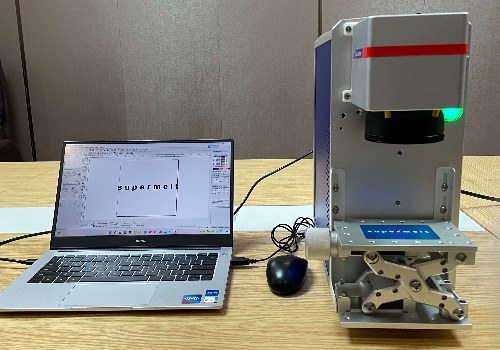
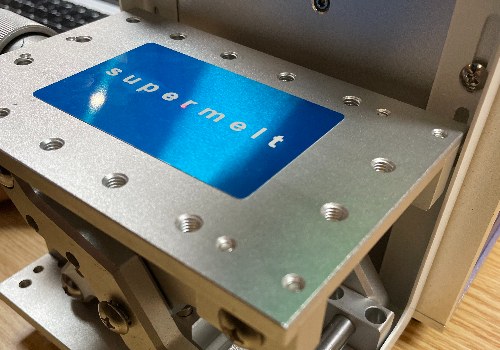
SuperbMelt 20W fiber laser engraver is a laser engraving machine tailored for the intricate world of precious metal jewelry. It’s capable of engraving jewelry of any shape, from bracelets and necklaces to rings and more, making it an essential tool for achieving large-scale production and streamlining manufacturing processes.
The 20W laser engraving machine delivers lasting marks and engravings, ensuring the enduring quality of the products. Thanks to its exceptional precision, it’s perfect for crafting intricate details and complex designs, making it the go-to choice for the jewelry industry.
Moreover, it finds extensive application in the crafts, giftware, and manufacturing sectors, allowing for the engraving of various materials, including metals, wood, plastic, leather, stone, and beyond.
| Model Number | SPB-MFLM |
| Average Output Power | 20W/30W/50W |
| Beam Quality | M²:1.5(TEMOO mode) |
| Repeatability | 0.01mm |
| Max Line Speed | 12000mm/s |
| Min Line Width | 0.017mm |
| Power Adjustment Range | 1%-100% |
| Laser Wavelength | 1064nm |
| Total Power | ≤500W |
| Marking Range | 110mm*110mm/175mm*175mm |
| Cooling System | Air Cooled |
| Laser Repetition Rate | 20KHz-80KHz(Adjustable) |
| Equipment Working Environment | Clean or Less Dusty |
| Min Character | 0.2mm*0.2mm |
| Equipment Operating Temperature | 13℃-28℃ |
| Marking Depth | 0.01mm-1mm(Determined by material) |
| Power Requirements | AC220V/50Hz/2A |
The features and advantages of the SuperbMelt 20W fiber laser marker are as follows:
- Versatility: This machine is highly versatile and can engrave a wide range of materials, including various metals (e.g., gold, silver), wood, plastic, leather, and stone. It’s perfect for jewelry but also suitable for other applications.
- High Precision: The 20W laser ensures extremely high precision, making it capable of engraving intricate details and complex patterns with exceptional accuracy. This is crucial for jewelry engraving and other fine work.
- Durable Engravings: The marks and engravings created with this machine are long-lasting and resistant to fading or wear over time. This durability ensures the quality of the products remains high.
- Large-Scale Production: SuperbMelt’s laser marker facilitates large-scale production. Its efficiency and automation features streamline the manufacturing process, saving time and labor costs.
- Ideal for Jewelry: Specifically designed for jewelry, this machine is an excellent choice for engraving a wide range of jewelry items, including bracelets, necklaces, rings, and more.
- Wide Application: While perfect for the jewelry industry, it also serves other sectors like crafting, giftware, and manufacturing. It can handle various materials, expanding its utility.
- Ease of Use: SuperbMelt’s laser marker is user-friendly and can be operated with relative ease. This makes it accessible to both experienced jewelers and those new to the craft.
These features and advantages make the SuperbMelt 20W fiber laser marker an indispensable tool for those seeking precision and efficiency in engraving and marking various materials, particularly in the jewelry and related industries.
1. Jewelry Manufacturing
The SuperbMelt 20W fiber laser engraver is a cornerstone for the jewelry industry. It excels in engraving on precious metals, including gold, silver, and platinum, ensuring intricate designs and fine details. Whether it’s marking rings, bracelets, necklaces, or other jewelry pieces, the machine delivers precision and durability. Its capacity to handle high production volumes streamlines the manufacturing process, making it ideal for large-scale jewelry production.
2. Crafts and Giftware
In the crafts and gift industry, the engraver allows for the personalization of items like trophies, awards, and custom gifts. It works seamlessly on a variety of materials, including metals, wood, leather, and stone, enabling the creation of bespoke items with lasting engravings.
3. Industrial Applications
The 20W fiber laser engraver is also suitable for industrial use, where permanent and precise markings are essential. Applications include engraving serial numbers, logos, and other identifiers on tools, machinery parts, and equipment components.
4. Artistic Design and Prototyping
For artists and designers, this engraver supports the realization of complex and creative designs on multiple surfaces. Its precision makes it a favorite for prototyping and producing high-quality samples.
5. Multi-Material Versatility
Beyond jewelry and metals, the machine engraves effectively on materials like plastics, wood, leather, and even some types of stones, broadening its usability across industries such as furniture manufacturing, fashion, and automotive parts.
Benefits in Application
- Durable and High-Quality Markings: Ensures permanent, clear engravings.
- Enhanced Production Efficiency: Saves time and resources during manufacturing.
- Versatile Material Compatibility: Works on diverse surfaces, making it an all-purpose tool.
- User-Friendly: Offers ease of use, even for beginners.
- Eco-Friendly Process: Requires no additional consumables, reducing waste.
By leveraging the SuperbMelt 20W fiber laser engraver, industries can achieve unparalleled precision, improve workflow efficiency, and cater to customized demands effortlessly.
Why SuperbMelt 20W fiber laser engraver



Any Question About SuperbMelt 20W fiber laser engraver
About SuperbMelt 20W Fiber Laser Engraving Machine and Related Products
20W Laser Marking Machine – Industry Application Guide
Top 10 Jewelry Designs You Can Engrave with a 20W Laser Marking Machine
A 20W laser marking machine is an ideal tool for jewelry designers and manufacturers looking to create precise and personalized engravings. This compact yet powerful machine can engrave a wide range of jewelry styles with incredible accuracy and detail. From custom name necklaces, intricate ring patterns, and symbolic pendants to luxury watch backplates, charm bracelets, and earrings, the 20W laser excels in adding logos, serial numbers, personal messages, and decorative motifs. It’s perfect for working with gold, silver, stainless steel, and titanium, making it suitable for both mass production and bespoke pieces. Whether you’re crafting minimalist monograms or complex floral patterns, this machine ensures clean lines and permanent marks without damaging the surface. Its ease of use and low daily operating costs also make it a valuable investment for both beginner jewelers and experienced professionals seeking to elevate their brand with high-quality engraving capabilities.
1.1, Examples of engraving patterns: patterns, logos, QR codes, personalized letters, etc.
Native platinum and platinum alloys can be found in concentrated sand and gravel beds called placer deposits. The sand and gravel beds are created when old rock is eroded from its source and further ground into pieces as it is washed into streams and rivers. Most
ChatGPT 说:
Here are some common examples of engraving patterns you can create with a 20W laser marking machine:
Decorative Patterns: Floral motifs, geometric shapes, filigree designs, and cultural symbols to enhance jewelry aesthetics.
Logos: Brand or designer logos for authenticity and recognition.
QR Codes: Embedded QR codes for traceability, certification info, or product links.
Personalized Letters: Names, initials, special dates, or short messages for sentimental value.
Serial Numbers or Hallmarks: For identification, compliance, or proof of material purity.
These engraving options allow jewelers to combine beauty, personalization, and functionality—making each piece truly unique.
1.2, Examples of engraving on special materials (platinum, silver, gold, titanium)
Platinum:
Fine wedding band inscriptions (e.g., initials, wedding date)
Microscopic serial numbers for authentication
Elegant floral or filigree patterns on engagement rings
Silver:
Brand logos and hallmarks indicating silver purity (e.g., 925)
Personal messages like “Forever Love” or “Best Friends”
Artistic patterns or vintage-style frames on pendants and coins
Gold:
QR codes for gold bar verification and traceability
Cultural or religious motifs (e.g., Om symbol, zodiac signs)
Luxury branding on high-end watches or bracelets
Titanium:
Tech-style engravings for modern jewelry and accessories
Medical alert info (e.g., allergies, blood type)
Laser-deep engraving for sports rings or military tags
1.3, Branding value brought by laser engraving
Laser engraving offers tremendous branding value across various industries, especially in the jewelry sector. It allows for the precise and permanent marking of logos, brand names, and custom designs directly onto valuable materials such as gold, silver, platinum, and titanium. This not only enhances product authenticity and professionalism but also helps build customer trust. Personalized engraving—such as initials, dates, or symbols—adds emotional value, encouraging brand loyalty and repeat purchases. Moreover, the ability to engrave unique serial numbers or QR codes supports traceability and anti-counterfeiting, further reinforcing a brand’s reputation for quality and innovation.
Why the 20W Laser Marking Machine is Ideal for Metal Crafts and Gifts
The 20W laser marking machine, with its exceptional precision and compatibility with various metal materials, has become an ideal choice for the metal crafts and gift customization industry. It is perfectly suited for high-precision engraving on precious metals such as stainless steel, gold, silver, and titanium, and can easily achieve permanent markings like QR codes, logos, text, and patterns, ensuring each product is unique. With its compact size and low energy consumption, it’s ideal for small studios and custom workshops. Easy to operate and low in maintenance cost, it significantly enhances production efficiency and creative flexibility. For manufacturers pursuing personalized, high-quality metal gifts, the 20W laser marking machine is a powerful tool for increasing product value and brand competitiveness.
2.1, How to engrave metal gifts, key chains, lighters, medals, etc. in batches
Step-by-Step Guide to Batch Engraving Metal Gifts
1. Choose the Right Laser Marking Machine
Use a fiber laser marking machine (e.g., 20W or 30W) that is specifically designed for metal materials. Fiber lasers provide high precision and fast engraving speed, making them ideal for batch production.
2. Design Your Artwork
Use graphic design software such as Adobe Illustrator or CorelDRAW to create your logo, text, QR code, or decorative patterns. Export the design in a compatible format (usually DXF, PLT, or SVG).
3. Import the Design into the Laser Software
Use the laser machine’s control software (e.g., EZCAD) to import your design and adjust the position, size, and engraving parameters such as power, speed, and frequency.
4. Prepare a Fixture or Jig
To engrave in batches, prepare a custom fixture (jig) that holds multiple items in place at once—e.g., 10 or 20 keychains laid out in a grid. This ensures consistent alignment and speeds up the process.
5. Adjust Focus and Positioning
Manually or automatically adjust the laser’s focal length to match the height of the items. Double-check the layout using the “preview” or “frame” function in the software to avoid misalignment.
6. Start Batch Engraving
Once everything is aligned and parameters are set, begin the engraving process. The laser will automatically engrave each item in sequence without the need for manual repositioning.
7. Post-Processing (Optional)
If needed, clean the engraved items using alcohol wipes or ultrasonic cleaners to remove any debris or discoloration.
2.2, Engraving depth and clarity display comparison
When it comes to laser engraving, depth and clarity are two critical factors that determine the final quality of the mark—especially on metal surfaces like gold, silver, stainless steel, and aluminum.
Engraving Depth vs. Clarity Comparison:
| Parameter | Shallow Engraving | Deep Engraving |
|---|---|---|
| Depth | 0.01 – 0.05 mm | 0.1 – 1.0 mm or more |
| Clarity | Very high for fine details | Slightly reduced for ultra-fine lines |
| Speed | Fast marking speed | Slower due to multiple passes |
| Durability | Good for non-wear applications | Excellent for long-lasting impressions |
| Ideal For | Jewelry, ID tags, QR codes, logos | Serial numbers, medal lettering, deep branding |
Shallow engraving offers a clean and polished look, ideal for luxury gifts, jewelry, or branding logos where precision is key.
Deep engraving provides a tactile, rugged feel—perfect for awards, heavy-use keychains, or outdoor gear needing long-term durability.
By adjusting laser power, frequency, and speed, operators can balance both depth and clarity to meet different design needs in batch production.
2.3, How to achieve batch automatic numbering or barcode marking
1. Use Software with Variable Data Function
Most laser marking machines, especially fiber laser machines (like the 20W model), come with software such as EZCAD that supports variable data marking. This allows automatic changes between each engraving in a batch—ideal for serial numbers, barcodes, or QR codes.
✔ Import an Excel or CSV file with pre-set numbers/barcodes
✔ Or, set up auto-increment rules (e.g., 0001 → 0002 → 0003…)
✔ Software will update the content automatically for each item
2. Set Up a Fixture or Jig for Batch Positioning
To engrave multiple items like keychains, medals, or lighters:
✔ Use a custom fixture to position several items at once
✔ The laser head will mark each piece sequentially, guided by the software
3. Barcode or QR Code Generation
Built-in tools can generate standard barcodes (e.g., Code128, EAN) or QR codes
Input data can be dynamic (from serial numbers or text entries)
The laser engraver ensures high-contrast, scannable code results on metals
4. Test for Depth and Clarity
Adjust laser speed, power, and frequency for optimal barcode/serial marking clarity
Ensure readability by scanners and long-term durability on metal surfaces
Application of 20W Laser Marking Machine in the Electronics Industry
The 20W Laser Marking Machine is widely applied in the electronics industry due to its high precision, fast marking speed, and permanent, wear-resistant results. It is commonly used for marking serial numbers, barcodes, QR codes, logos, and technical specifications on electronic components such as circuit boards, connectors, mobile phone shells, batteries, and chips. Its non-contact process ensures that even delicate or heat-sensitive materials like plastic or metal-coated surfaces are not damaged. Furthermore, the machine supports automated integration with production lines, enabling continuous and efficient batch processing.
3.1, Engraving serial numbers, QR codes, and CE marks on electronic components
The 20W Laser Marking Machine excels at engraving serial numbers, QR codes, and CE marks on electronic components with high precision and clarity. This capability ensures traceability, regulatory compliance, and brand identification. Its fast, non-contact marking process prevents damage to sensitive parts, making it ideal for items like circuit boards, connectors, and device casings. The machine’s automation features allow for efficient batch processing, supporting large-scale electronics manufacturing.
3.2, How to ensure micro-engraving accuracy
1. Use a High-Precision Laser Source
Choose a fiber laser, especially a 20W or higher MOPA laser, which offers a fine beam diameter for detailed work.
Ensure the machine has high beam quality (M² close to 1) for sharper, cleaner lines.
2. Fine-Tune Focal Distance
Use an autofocus system or precise Z-axis adjustment to ensure the laser is always focused exactly on the surface.
An incorrect focus can blur or distort micro details.
3. Optimize Marking Parameters
Use lower marking speeds and higher frequency settings for better control and depth.
Adjust power output, pulse width, and line spacing (hatch distance) to prevent over-burning or loss of detail.
4. Use High-Resolution Software
Work with laser control software that supports vector-based precision drawing, 0.001 mm resolution, and advanced barcode/QR code generation.
5. Stable Work Platform
Ensure the machine has a vibration-free structure and is placed on a level surface.
Even small vibrations can compromise accuracy at micro scale.
6. Microscopic Inspection & Testing
Use a microscope or magnifier to inspect test engravings.
Make calibration adjustments based on the micro inspection results.
7. Material Considerations
Different materials react differently to lasers. Ensure the material surface is clean and smooth for best micro-engraving results.
Pre-test different materials to find optimal engraving settings.
3.3, Application techniques of laser marking on plastics and aluminum alloys
1. Plastics
Laser marking on plastics depends heavily on the type of plastic and any additives (like pigments or fillers). Common plastics include ABS, PC, PP, and PVC.
Techniques:
Use fiber or UV lasers depending on the plastic type. Fiber lasers work well with darker or filled plastics, while UV lasers are better for sensitive or transparent materials.
Adjust frequency and speed: Higher frequencies create more heat, which may cause melting. Balance speed and frequency to avoid deformation or discoloration.
Foaming and color change marking: Instead of engraving, the laser modifies the surface to create a contrast—ideal for barcode and logo marking.
2. Aluminum Alloys
Aluminum alloys are widely used in electronics, automotive, and aerospace.
Techniques:
Use fiber lasers (20W or higher) for clean, high-contrast engraving.
Black marking on anodized aluminum: Adjust pulse duration and frequency to remove the anodized layer and create deep black contrast.
Ensure optimal focus and low-speed/high-power settings for deeper engravings like serial numbers or logos.
FAQ Guide of 20W Fiber Laser Engraver
- 1. What materials can the 20W fiber laser marker engrave on?
- 2. What can you do with a 20W fiber laser?
- 3. What is the difference between a 20W and 30w laser engraver?
- 4. What is the best wattage for laser engraving?
- 5. Can it engrave intricate designs and fine details?
- 6. Is it suitable for large-scale production?
- 7. What safety features are in place to protect users?
- 8. What kind of technical support and warranty does SuperbMelt provide?
- 9. What file formats are compatible with the 20W fiber laser marker?
- 10. How fast is the engraving process with this machine?
- 11. Is this machine suitable for permanent marking on jewelry and other products?
- 12. What maintenance is required for the 20W fiber laser marker?
- 13. Can the machine be customized for specific production needs?
- 14. Does SuperbMelt offer training for operating the machine?
- 15. Is the 20W fiber laser marker energy-efficient?
- 16. What makes SuperbMelt's 20W fiber laser marker stand out from the competition?
1. Is 20W fiber laser enough?
Whether a 20W fiber laser is sufficient depends on the specific application and materials you plan to work with. Here are some factors to consider when evaluating if 20W is enough for your needs:
1. Material Type
- Metals: For engraving precious metals like gold, silver, platinum, and even stainless steel, a 20W fiber laser is typically sufficient. Fiber lasers are particularly efficient for metal engraving due to their high absorption rate and precision. However, for very hard metals or thick materials, a higher power laser (such as 30W or 50W) might be more appropriate for faster results.
- Non-Metals: For engraving on materials like wood, plastic, leather, and acrylic, 20W is more than enough. The laser power required for these materials is generally lower than metals, so a 20W fiber laser can easily handle these applications with great precision.
2. Engraving Detail and Precision
- A 20W fiber laser provides excellent precision, making it ideal for intricate designs, detailed logos, text engraving, and fine lines. If your goal is to create small, detailed engravings on jewelry or similar items, a 20W laser will provide the high-quality results you need.
3. Speed and Efficiency
- For high-throughput production, a 20W laser offers a good balance between power and speed. It is capable of engraving at a reasonable speed while maintaining the detail needed for high-end applications. However, if you are working with large-scale projects that require rapid processing, you might want to consider a more powerful system to reduce engraving time.
4. Application Type
- Jewelry Engraving: A 20W fiber laser is ideal for engraving jewelry, as it can deliver fine details and precise markings on delicate items like rings, bracelets, and necklaces. It’s especially effective for creating personalized engravings, patterns, and logos on small pieces.
- Industrial Applications: For industrial marking, a 20W laser will generally suffice for engraving serial numbers, barcodes, or logos on components and tools. However, for larger or thicker parts that require deeper engraving, higher-powered lasers may be more appropriate.
5. Material Thickness
- While a 20W laser works well for engraving on thin to medium thickness materials, it might not be sufficient for deep engraving on thick metal parts. For deeper marks or faster processing, you may need a higher-power laser, such as 30W or 50W.
Conclusion:
For most jewelry engraving applications, personalization tasks, and medium-thickness metals, a 20W fiber laser is generally sufficient. It strikes a good balance between power and precision, offering excellent engraving quality, speed, and versatility. However, for high-speed industrial marking, or for working with thicker and tougher materials, you may want to consider a higher-powered laser to improve performance and reduce processing time.
In summary, 20W fiber lasers are ideal for high-precision, small to medium scale applications like jewelry engraving, with the capability to handle a wide variety of materials, including metals and non-metals. If your needs extend to high-volume, industrial-scale marking, or deep engraving on thick materials, you may want to explore lasers with higher power options.
2. What can you do with a 20W fiber laser?
A 20W fiber laser is a versatile tool that can be used for a wide range of applications, particularly in engraving, marking, and cutting materials with high precision. Below are some of the key things you can do with a 20W fiber laser:
1. Engraving Precious Metals
- Jewelry Engraving: You can engrave intricate designs, names, logos, and personalization on precious metals such as gold, silver, platinum, and titanium. The high precision of a 20W fiber laser makes it ideal for creating fine details on jewelry items like rings, bracelets, necklaces, and pendants.
- Monograms and Custom Text: You can engrave text or logos on jewelry or small metal objects with excellent clarity and detail.
2. Marking Metals and Industrial Parts
- Metal Marking: A 20W fiber laser is commonly used in marking applications for industrial parts and tools. You can mark serial numbers, barcodes, logos, and QR codes on metals like stainless steel, aluminum, brass, and copper.
- Permanent Marking: The markings are permanent and resistant to wear, making fiber lasers ideal for products that require long-lasting identification or tracking.
3. Cutting Thin Metals
- While cutting thick metals requires higher power lasers, a 20W fiber laser can still be used to cut thin metals (usually up to 1-2mm thick) with high precision. Common metals cut include stainless steel, aluminum, and brass.
4. Engraving Non-Metals
- Wood Engraving: You can create intricate designs, logos, or text on wood. This is perfect for personalizing gifts, awards, or decor.
- Plastic and Acrylic Engraving: Fiber lasers work well for engraving on various plastics and acrylics, offering fine detail for signage, labels, and custom designs.
- Leather and Fabric Engraving: A 20W fiber laser can be used to etch logos, patterns, or text onto leather, fabric, or synthetic materials for custom accessories, wallets, belts, and more.
- Stone Engraving: Fiber lasers can engrave on stones, including granite, marble, and ceramics, making it suitable for creating custom tombstones, plaques, or decorative stones.
5. Cutting and Engraving Glass
- Glass Engraving: You can engrave intricate designs or text onto glass, including items like wine glasses, trophies, or awards. The laser creates precise, deep engravings without damaging the surface.
6. Customizing Gifts and Awards
- Personalized Gifts: A 20W fiber laser is perfect for customizing gifts such as glassware, watches, pens, or other small accessories with logos, names, and designs.
- Trophies and Awards: You can engrave high-precision logos, text, and designs on trophies, medals, and plaques.
7. Cutting and Engraving Electronics
- PCB Marking: For the electronics industry, 20W fiber lasers are used for marking printed circuit boards (PCBs), components, and semiconductors, helping with traceability and identification.
- Battery and Component Marking: Smaller electronic components, including batteries and connectors, can be engraved with part numbers, logos, or identification codes.
8. Creating Prototypes and Samples
- Rapid Prototyping: A 20W fiber laser is ideal for creating prototypes of designs and products in small runs. It’s particularly useful for designers, engineers, or makers who need to quickly test or visualize ideas.
9. Laser Etching on Coated or Painted Surfaces
- Surface Etching: You can use a 20W fiber laser to etch on coated, anodized, or painted metal surfaces without damaging the underlying material. This is useful for adding decorative or functional markings to parts or products.
10. Cosmetic and Artistic Engraving
- Artistic Work: Fiber lasers can be used to engrave artistic designs and images on a variety of materials, adding depth and precision to artwork. This is often used in the creation of custom artworks, fashion accessories, and decorative items.
Why a 20W Fiber Laser is Popular:
- High Precision: The 20W fiber laser can achieve extremely fine details, which is especially important in applications like jewelry engraving and intricate marking.
- Durable and Long-Lasting Marks: The laser creates permanent marks that are resistant to wear and corrosion, making it ideal for industrial applications.
- Low Operating Costs: Fiber lasers are energy-efficient, and their low maintenance requirements make them a cost-effective solution in the long term.
- Versatile Application: It can be used on a variety of materials, both metals and non-metals, making it suitable for multiple industries and applications.
Conclusion:
A 20W fiber laser is a highly versatile, precise, and cost-effective tool that can be used for a wide range of engraving, marking, and cutting applications. It is ideal for small to medium-sized businesses and industries, particularly in jewelry making, personalization, metal marking, and customized production.
3.What is the difference between a 20W and 30w laser engraver?
The main difference between a 20W and 30W laser engraver lies in their power output, which significantly impacts their engraving and cutting capabilities. Here’s a breakdown of the key differences:
1. Power Output
- 20W Laser Engraver: This machine has a 20-watt laser which is suitable for engraving on softer materials like wood, acrylic, plastics, and light metals (e.g., aluminum, brass, and copper). It’s ideal for fine details and delicate designs, but its cutting ability is limited to thinner materials.
- 30W Laser Engraver: With a 30-watt laser, this machine has more power, allowing it to engrave and cut materials at a faster rate and with greater depth. It can handle thicker materials, including thicker metals (up to 3mm), and can work with harder surfaces. The higher wattage enables better engraving quality on harder metals like stainless steel and also allows for deeper etching or cutting in some materials.
2. Engraving Speed
- 20W Laser Engraver: Typically, a 20W laser is slower in engraving compared to a higher-power machine. This means for intricate designs, it will take longer to complete the engraving.
- 30W Laser Engraver: The 30W laser can engrave at a faster speed, especially for larger designs or thicker materials. This makes it more efficient for higher-volume production.
3. Cutting Capability
- 20W Laser Engraver: A 20W laser is good for cutting thin materials (up to 1mm-2mm thickness), but it will struggle with cutting through thicker materials or metals.
- 30W Laser Engraver: The 30W laser has enough power to cut thicker materials (up to 3mm-5mm) like acrylic, MDF, and some metals (e.g., stainless steel). It can also create deeper cuts or engravings on harder materials.
4. Material Compatibility
- 20W Laser Engraver: Suitable for softer materials like wood, leather, plastic, rubber, and thin metal sheets (aluminum, brass). It’s also widely used for engraving on glass, stone, and ceramics.
- 30W Laser Engraver: With its higher power, the 30W laser can handle thicker and harder materials. It’s more suitable for engraving and cutting on stainless steel, anodized aluminum, and stone. It can also engrave and cut acrylics and wood at faster rates.
5. Depth of Engraving
- 20W Laser Engraver: The depth of engraving with a 20W machine is relatively shallow compared to a 30W machine. This is perfect for intricate designs and details but may not work well for creating deeper engravings on harder materials.
- 30W Laser Engraver: With a 30W laser, the machine can engrave deeper into materials, especially metals, creating more pronounced marks and detailed engravings. This is beneficial for industrial applications and creating more durable engravings.
6. Cost and Efficiency
- 20W Laser Engraver: Lower wattage means a more affordable price point. It’s ideal for small businesses or hobbyists who don’t need to cut through thick materials but require precise and high-quality engravings.
- 30W Laser Engraver: The higher wattage means greater efficiency for large-scale production, especially when engraving and cutting thicker materials. It is more expensive but offers better versatility for a wide range of materials and thicker items.
7. Energy Consumption
- 20W Laser Engraver: Lower power consumption compared to a 30W laser. This results in lower operating costs for smaller, more precise engraving projects.
- 30W Laser Engraver: Higher energy consumption due to the increased wattage, which means it can perform more demanding tasks but also results in higher operating costs for the user.
Summary Table
| Feature | 20W Laser Engraver | 30W Laser Engraver |
|---|---|---|
| Power Output | 20 watts | 30 watts |
| Engraving Speed | Slower for detailed work | Faster, suitable for larger production |
| Cutting Capability | Can cut thin materials (up to 2mm) | Can cut thicker materials (up to 3-5mm) |
| Material Compatibility | Wood, acrylic, plastics, thin metals | Thicker metals, harder materials, acrylic, wood |
| Depth of Engraving | Shallow engraving depth | Deeper engraving depth, especially on metals |
| Cost | More affordable | More expensive |
| Energy Consumption | Lower energy consumption | Higher energy consumption |
| Ideal For | Small-scale production, intricate designs, hobbyists | Industrial applications, larger production, thicker materials |
Which One Should You Choose?
- Choose a 20W Laser Engraver if you are working with smaller, intricate projects and primarily engraving softer materials or small batches of work. It’s also better if you’re on a budget and need something energy-efficient for detailed engraving.
- Choose a 30W Laser Engraver if you plan to work with thicker materials, need faster engraving for high-volume work, or require deeper engravings. It’s ideal for industrial use and businesses that need versatile engraving and cutting capabilities.
4. What is the best wattage for laser engraving?
The best wattage for laser engraving depends on several factors, including the materials you plan to engrave, the level of detail required, and the size of the projects you’re working on. Here’s a general guideline to help you choose the best wattage for your needs:
1. Low Wattage (5W to 20W)
Best For:
- Intricate and detailed engravings on softer materials like wood, leather, acrylic, and certain plastics.
- Small-scale projects and hobbyist work.
- Personalized gifts, engraving on jewelry, and craft items.
Advantages:
- Lower power consumption, resulting in lower operating costs.
- Ideal for fine details and delicate designs.
- Affordable, making it a great choice for small businesses and hobbyists.
- Produces shallow engravings, making it perfect for fine, detailed work.
Limitations:
- Limited cutting ability, especially on thicker or harder materials.
- Not suitable for large-scale production or high-volume tasks.
Example Uses:
- Engraving on wood, leather, and thin metals.
- Personalization of jewelry, awards, and trophies.
- Small and intricate designs like logos and text.
2. Mid Wattage (30W to 50W)
Best For:
- Versatile use on a wide range of materials including wood, plastics, acrylic, leather, and metals.
- Medium to large projects, as well as cutting and engraving thicker materials.
- Commercial and semi-industrial applications where speed and versatility are important.
Advantages:
- Can cut thicker materials (up to 3mm-5mm for metals like stainless steel, brass, and copper).
- Faster engraving speed compared to low wattage lasers, improving efficiency.
- Can handle a wider variety of materials, including ceramics and glass.
- Produces medium-depth engravings, perfect for engraving metals like stainless steel and anodized aluminum.
Limitations:
- More expensive than low wattage options.
- Higher energy consumption.
Example Uses:
- Engraving and cutting thicker acrylics, MDF, or plywood.
- Cutting leather and rubber.
- Industrial applications such as creating signage, custom gifts, and larger engravings on jewelry or metal products.
3. High Wattage (60W to 150W+)
Best For:
- Industrial and large-scale commercial production.
- Cutting and engraving on very thick materials, such as metal, stone, and thick wood.
- Heavy-duty tasks like large signs, metal parts, and batch engraving in factories.
Advantages:
- Can cut through thick metals, such as stainless steel (up to 5mm-10mm or more).
- Capable of engraving and cutting harder materials like stone, ceramics, and thick glass.
- Ideal for mass production and high-throughput engraving.
- Faster cutting speeds and deeper engraving capabilities.
Limitations:
- High initial cost and operating expenses.
- Requires cooling systems due to the high power.
- May produce rougher finishes compared to lower wattage lasers on delicate materials.
Example Uses:
- Large-scale metal fabrication, cutting and engraving thick metals like stainless steel and brass.
- Industrial applications in automotive, aerospace, and construction.
- Large signage and custom artwork for businesses and commercial applications.
Choosing the Best Wattage for Your Needs
Hobbyists and Small Businesses: A 20W or 30W laser engraver is ideal for engraving and cutting smaller items like jewelry, gifts, and craft pieces. This wattage provides enough power to work with most materials without excessive power consumption.
Medium to Large-Scale Production: A 50W laser engraver offers a balance between speed and versatility. It can handle a wide range of materials, including metals, and is well-suited for engraving, cutting, and industrial applications.
Industrial Applications: If you’re cutting through thick materials (e.g., metal fabrication or large signage), a 60W to 150W+ laser will give you the cutting power and speed needed for high-volume production.
Summary of Recommended Wattage Based on Application
| Wattage | Best For | Material Compatibility | Use Case |
|---|---|---|---|
| 5W-20W | Small-scale, intricate designs, engraving | Wood, acrylic, leather, soft metals, plastics | Jewelry engraving, gifts, crafts, personal items |
| 30W-50W | Versatile, cutting and engraving on thicker materials | Wood, acrylic, plastic, leather, metals | Signage, medium-volume production, custom engraving |
| 60W-150W | Industrial production, cutting thick materials | Metals, stone, thick plastics, glass | Metal fabrication, industrial applications, large signage |
Ultimately, the best wattage for your laser engraving needs depends on the types of materials you work with and the scale of your production. Higher wattage lasers offer more versatility but come at a higher cost, so it’s essential to balance power, precision, and budget when making a decision.
5. Can it engrave intricate designs and fine details?
Absolutely. The 20W laser provides high precision, allowing it to engrave even the most intricate designs and fine details, making it perfect for jewelry work.
6. Is it suitable for large-scale production?
Yes, the machine is designed for efficient and large-scale production, making it an excellent choice for businesses needing high output.
7. What safety features are in place to protect users?
SuperbMelt ensures that its laser marker complies with safety standards, and it typically includes features like protective enclosures and safety interlocks.
8. What kind of technical support and warranty does SuperbMelt provide?
SuperbMelt offers technical support and a warranty to ensure that customers have assistance and peace of mind regarding the performance of their machine.
9. What file formats are compatible with the 20W fiber laser marker?
Typically, the machine supports a variety of file formats, including vector formats like DXF, PLT, and AI, making it versatile for design input.
10. How fast is the engraving process with this machine?
The engraving speed can vary based on the material and design complexity, but the 20W laser is known for its efficiency and can provide relatively fast results.
11. Is this machine suitable for permanent marking on jewelry and other products?
Yes, the 20W fiber laser marker offers permanent and highly durable marking, making it an ideal choice for jewelry and other items that require lasting identification.
12. What maintenance is required for the 20W fiber laser marker?
Regular maintenance includes cleaning the lens and ensuring the machine’s ventilation system is clear to maintain optimal performance.
13. Can the machine be customized for specific production needs?
SuperbMelt often provides customization options, such as double-head configurations, to meet specific production requirements.
14. Does SuperbMelt offer training for operating the machine?
Yes, SuperbMelt typically provides training and user manuals to help customers become proficient in using their laser marker.
15. Is the 20W fiber laser marker energy-efficient?
Yes, this laser marker is designed to be energy-efficient, which helps reduce operational costs.
16. What makes SuperbMelt's 20W fiber laser marker stand out from the competition?
The machine’s high precision, durability, and versatility for multiple materials set it apart, making it a top choice for various industries.
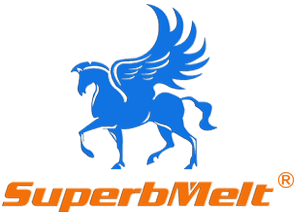
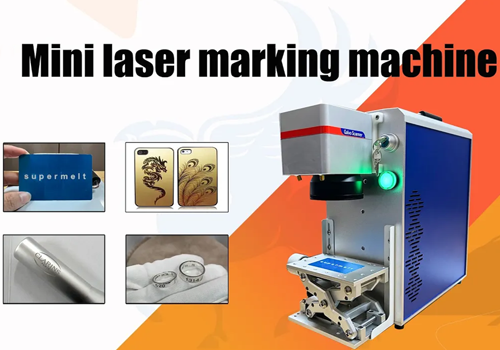
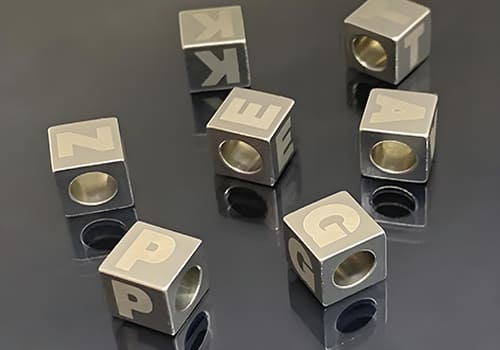
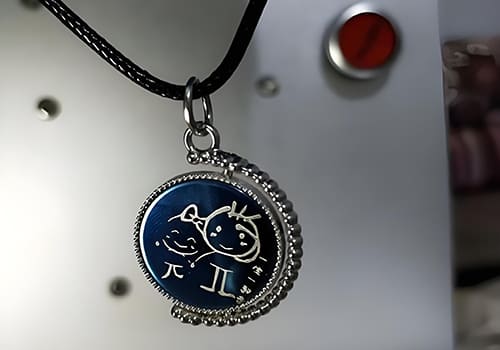
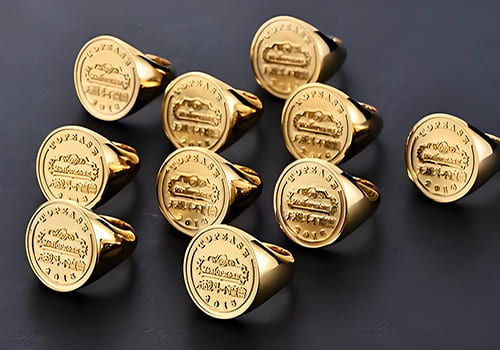
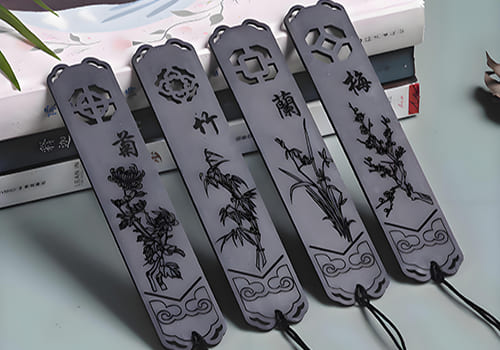
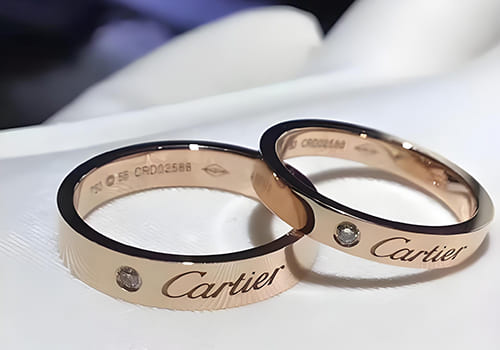
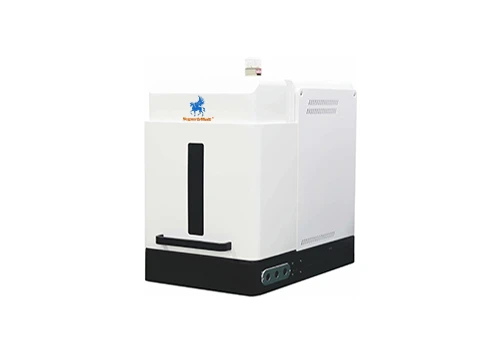
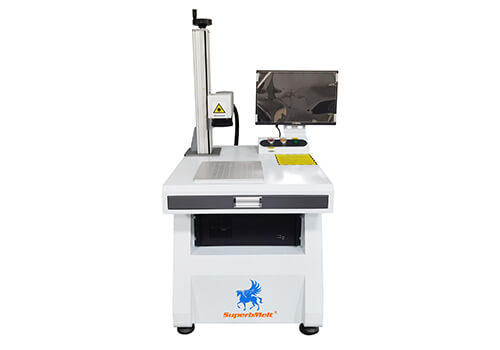


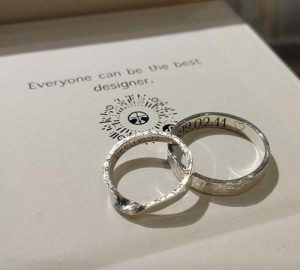
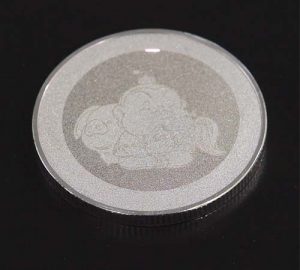
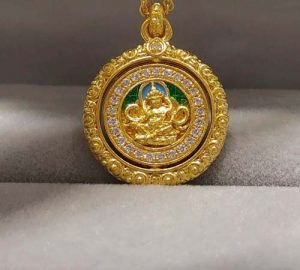
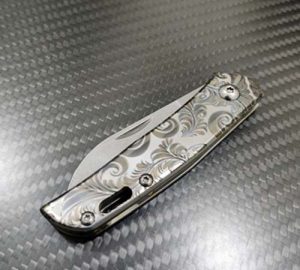
 © Copyright 2008-2021 Superb Electromachinery Co., Limited
© Copyright 2008-2021 Superb Electromachinery Co., Limited